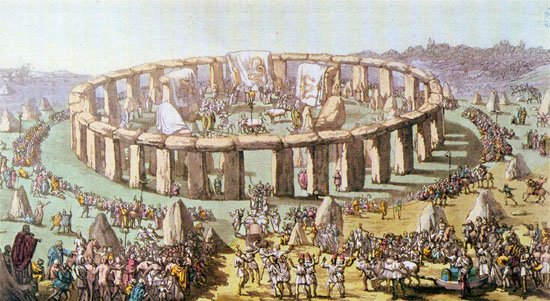The first observatories we know addressed this problem. Stonehenge was an observatory to determine the exact day of summer soltice:

|

|
All through history, and to predict other important and dramatic celestial events (like eclipses), the astronomers/priests/astrologers developed accurate long term calendars and texts. Nearly every culture on earth, from the Mayas and Plains Indians to the Chinese studied the celestial sphere and its motions.
The roots of Modern (western) Astronomy trace back more than 3000 years. In the seventeenth century BC, the Babylonians accurately observed Venus, the Moon, planets, eclipses, solstices and equinoxes; the Greeks contributed modeling, geometry, and logic; the Egyptians, observations; the empire of Islam, instrumentation, constellations patterns, and star names.
However, while astronomy and astrology were closely tied with the study of mathematics, it was philosophers who were the scientists of the day. For this reason, all Greek models of the universe were strongly influenced by Greek philosophy. For instance, the philosopher Pythagoras (of `Pythagorean theorem' fame), stated that the sphere was the perfect geometric shape. The philosopher Plato (of `Platonic ideal' fame), stated that uniform circular motion was the perfect kind of motion. (On the imperfect Earth, objects fall straight down; in the perfect heavens, stars move in circles around the celestial pole.)
Greek concepts of the Universe were often governed more by these philosophical points than by a desire to fit the data (motions of the planets) accurately. Two of Plato's most famous students, Eudoxus and Aristotle, proposed models where the stars, Sun, Moon, and planets are attached to spherical transparent shells undergoing uniform circular motion around the Earth. This is known as a GeoCentric Universe.